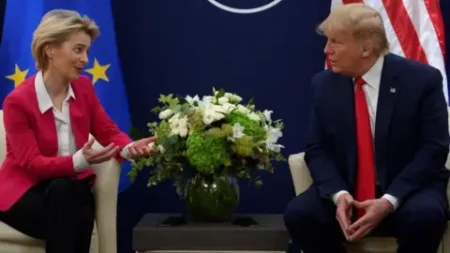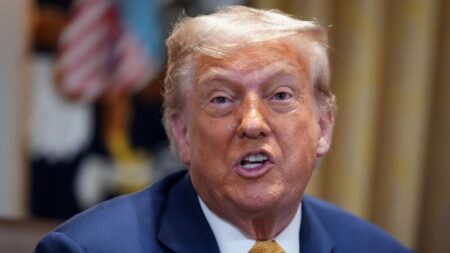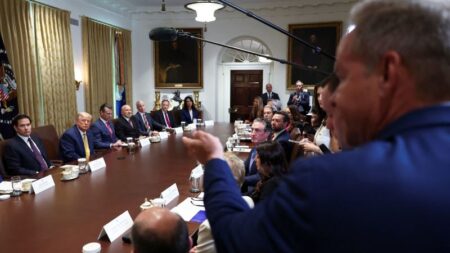In a significant move concerning international trade relations, President Donald Trump dispatched letters on a Wednesday to six countries, thereby expanding his administration’s ongoing initiative to impose new tariffs on various global trading partners. This development signals a continued trajectory of protectionist policies that have characterized Trump’s presidency, particularly concerning trade deficits that the United States experiences with numerous nations.
The latest nations to receive Trump’s missives include the Philippines, Moldova, Brunei, Algeria, Libya, and Iraq. The proposed tariffs on goods imported to the United States from these countries could reach as high as 30%, with enforcement set for August 1, contingent upon ongoing negotiations. Notably, while the tariffs proposed for Moldova, Iraq, and Libya were lower than those suggested in early April, those applied to goods from the Philippines and Brunei have increased when compared to previous rates. This nuanced adjustment suggests an evolving stance on Trump’s part as he navigates the complexities of international trade dynamics.
According to data compiled by the U.S. Department of Commerce, the total value of imports from the aforementioned nations amounted to approximately $24 billion last year. When juxtaposed against the broader context of U.S. trade, which saw total imports reach a staggering $3.2 trillion, it becomes evident that these six countries account for less than 1% of total imports into the United States. Despite this relatively small figure, Trump’s administration views these trade relationships as critical to addressing the systemic trade imbalances that he argues have disadvantaged American businesses.
In reaction to these announcements, U.S. stock markets exhibited stability, with the Dow Jones Industrial Average rising by 75 points or roughly 0.17%. The S&P 500 index increased by 0.27%, and technology sector stocks, represented by the Nasdaq Composite, saw a more significant rally, climbing by 0.52%. These market corrections indicate investor resilience amid the potentially disruptive news concerning tariff escalations.
Since Trump issued his initial threats of “reciprocal” tariffs earlier in April this year, negotiations with various trading partners have been ongoing. However, the outcomes appear limited so far, with few agreements successfully established. During a cabinet meeting on Tuesday, Trump expressed optimism by stating, “a letter means a deal,” indicating his belief that formal written communication could streamline terms. Nevertheless, this perspective may not be universally shared, as many nations might regard such correspondences as mere posturing rather than actionable negotiations.
In his letters to the leaders of these nations, Trump explicitly highlighted his concerns regarding the United States’ trade deficits with them. He articulated that these deficits arise when American imports significantly surpass exports to these countries. Moreover, Trump asserted that the imposition of tariffs is not arbitrary but rather a calculated response to international policies perceived as barriers to the competitive positioning of American goods in the global market.
In an interesting turn, Trump has encouraged foreign leaders to consider establishing manufacturing operations within the United States as a strategy to mitigate tariff impacts. He also warned that should these countries retaliate by imposing their tariffs on American exports, he reserves the right to escalate the tariffs on imports from those nations, creating a potential cycle of trade hostility.
This situation continues to evolve, with ongoing updates likely as negotiations progress and international reactions unfold. The implications of Trump’s tariff strategies could have lasting effects on U.S. trade relations and the broader global economic landscape, making this a developing story to watch closely.










